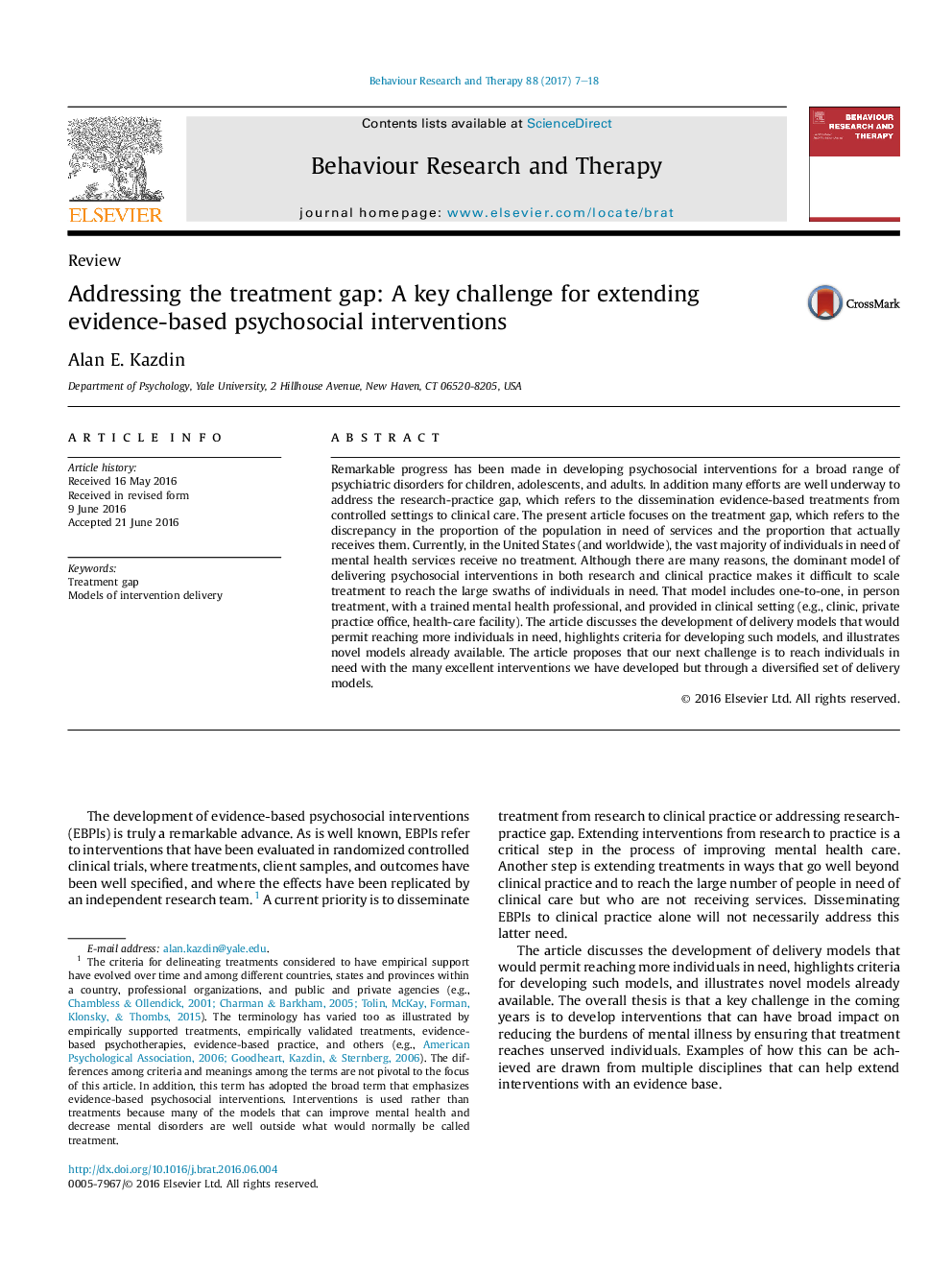| Article ID | Journal | Published Year | Pages | File Type |
|---|---|---|---|---|
| 5038305 | Behaviour Research and Therapy | 2017 | 12 Pages |
â¢Most individuals in need of mental health services receive no treatment.â¢The dominant model of delivering treatments will need to be complemented by models that can be scaled to reach larger numbers of individuals.â¢Criteria for models of delivery and illustrations of models are provided.â¢A key priority will be to deliver are well studied treatments in new ways.
Remarkable progress has been made in developing psychosocial interventions for a broad range of psychiatric disorders for children, adolescents, and adults. In addition many efforts are well underway to address the research-practice gap, which refers to the dissemination evidence-based treatments from controlled settings to clinical care. The present article focuses on the treatment gap, which refers to the discrepancy in the proportion of the population in need of services and the proportion that actually receives them. Currently, in the United States (and worldwide), the vast majority of individuals in need of mental health services receive no treatment. Although there are many reasons, the dominant model of delivering psychosocial interventions in both research and clinical practice makes it difficult to scale treatment to reach the large swaths of individuals in need. That model includes one-to-one, in person treatment, with a trained mental health professional, and provided in clinical setting (e.g., clinic, private practice office, health-care facility). The article discusses the development of delivery models that would permit reaching more individuals in need, highlights criteria for developing such models, and illustrates novel models already available. The article proposes that our next challenge is to reach individuals in need with the many excellent interventions we have developed but through a diversified set of delivery models.
